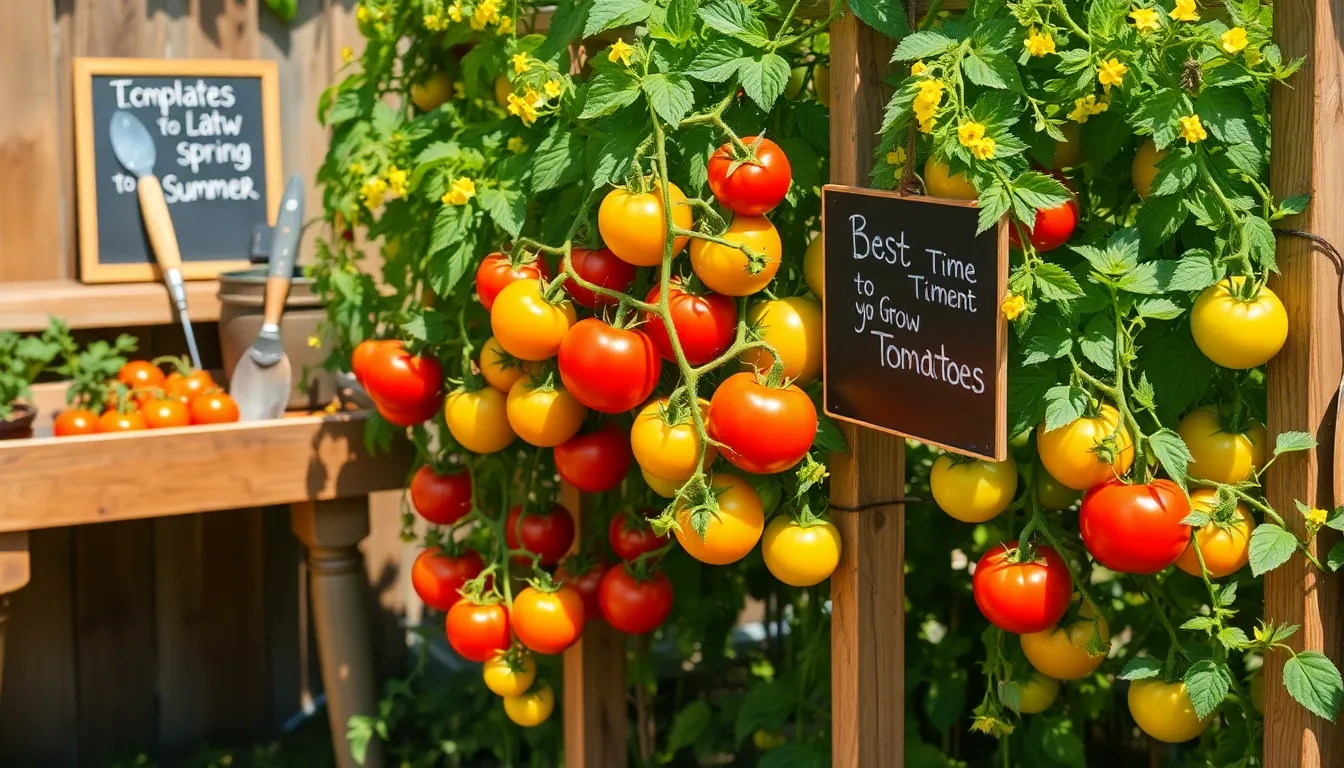There’s nothing quite like biting into a sun-ripened tomato fresh from your own garden, the taste of summer captured in a single juicy bite. Whether you’re a green-thumbed guru or a curious newcomer, growing your own tomatoes is a rewarding journey that combines the art of gardening with the science of timing. “Best Time To Grow Tomatoes” is your essential guide to mastering this beloved crop, offering insights that cater to both seasoned horticulturists and budding enthusiasts.
Within these pages, you’ll discover the secrets to timing your planting perfectly, ensuring your tomatoes flourish with vigor and abundance. This guide is packed with practical tips and expert advice, tailored to help you achieve a bountiful harvest, no matter your level of experience. By understanding the optimal growing periods and techniques, you’ll not only enjoy a bumper crop of tomatoes but also cultivate a deeper connection with the natural rhythms of your garden. Let this guide be your companion in creating a verdant oasis, where the joy and rewards of successful gardening are always within reach.
Heirloom Tomato Seeds (Flavorful Varieties for Optimal Planting Time)
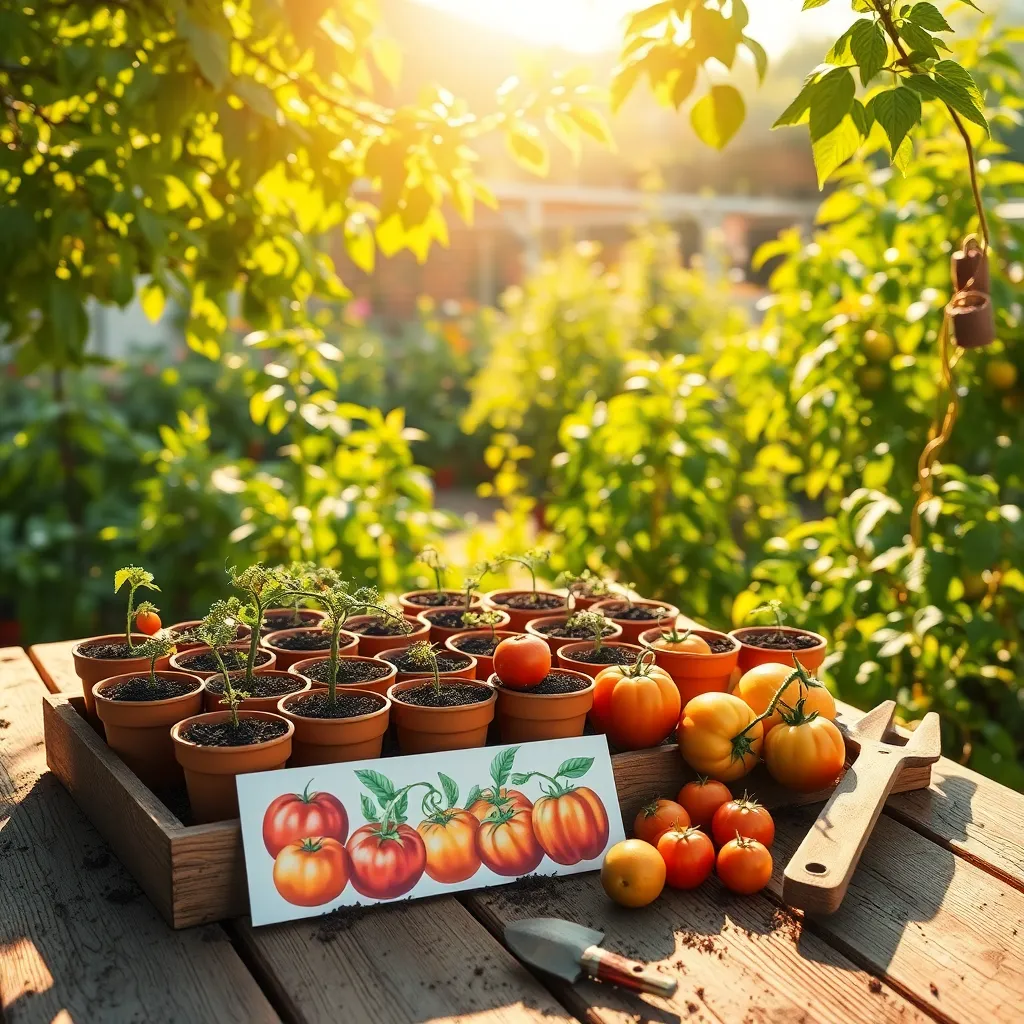
Heirloom tomato seeds are prized for their rich flavors and unique varieties, making them an excellent choice for any gardener. To maximize their potential, it’s important to plant them at the right time, typically after the last frost when soil temperatures consistently reach above 60°F.
Begin by selecting varieties known for their exceptional taste, such as Brandywine, Cherokee Purple, or Green Zebra. These varieties thrive in well-drained, nutrient-rich soil that has been amended with compost or aged manure to enhance fertility.
Proper seed starting techniques are crucial for a successful crop. Start seeds indoors 6-8 weeks before your region’s last expected frost date, using a seed-starting mix and keeping them under grow lights for 14-16 hours a day.
Once seedlings have at least two sets of true leaves, they can be hardened off by gradually exposing them to outdoor conditions over a week. This process strengthens plants and reduces transplant shock, ensuring they are robust enough for garden planting.
- Water consistently, aiming for about 1-1.5 inches per week, and mulch around plants to retain moisture.
- Support your plants with cages or stakes to prevent sprawling and to promote air circulation, reducing the risk of disease.
- Regularly inspect plants for pests like hornworms or aphids, and use organic solutions such as neem oil if needed.
For advanced gardeners, consider experimenting with grafting techniques to improve disease resistance and increase yield. Additionally, saving seeds from your best-performing plants can provide a continuous supply of resilient heirloom varieties for future seasons.
High-Quality Potting Mix (Nutrient-Rich for Tomato Growth)
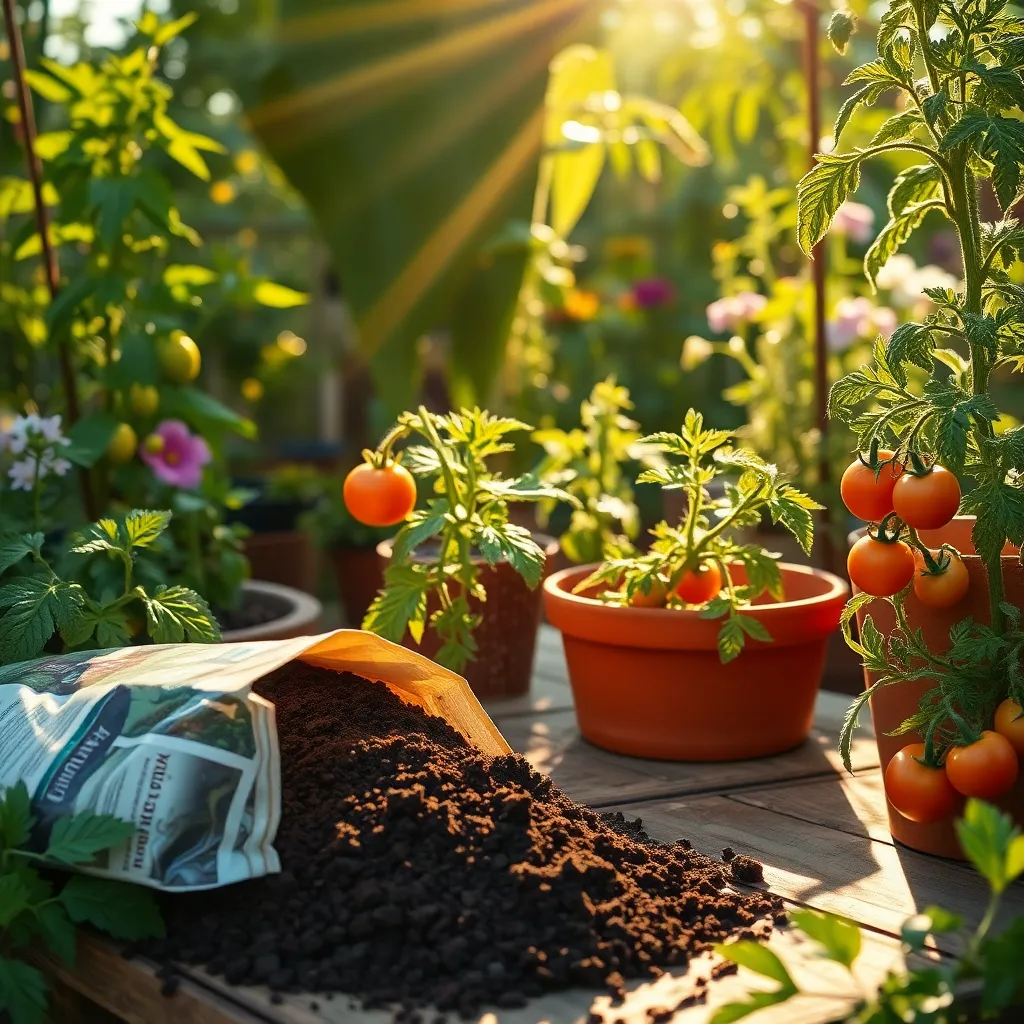
For thriving tomatoes, a high-quality potting mix is essential to provide the right balance of nutrients and support. Begin with a base of peat moss or coir, which retains moisture while ensuring good drainage, crucial for healthy root development.
Incorporating compost or well-rotted manure into the potting mix will enrich it with organic matter, providing essential nutrients that tomatoes require for vigorous growth. Ensure to mix it thoroughly to prevent any concentrated areas that could lead to uneven nutrient distribution.
Adding a handful of perlite or vermiculite helps in improving the aeration and drainage of your potting mix, preventing the roots from becoming waterlogged. This step is particularly beneficial for container gardening, where drainage can be a significant concern.
For an extra nutrient boost, consider blending in a slow-release tomato fertilizer, which provides a steady supply of nutrients as the plant grows. Follow the manufacturer’s instructions closely to avoid over-fertilizing, which can damage plants.
Tomato Cages (Sturdy Support for Vining Varieties)
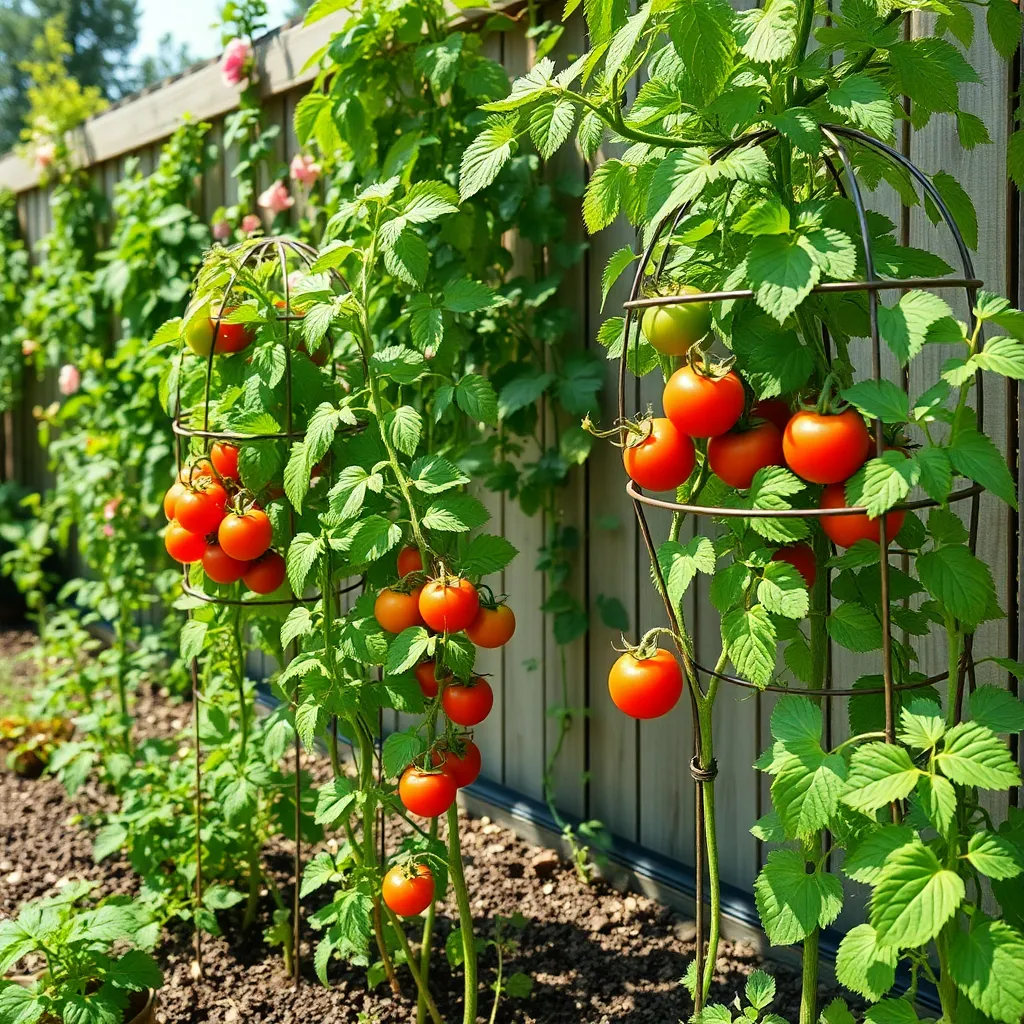
Tomato cages provide essential support for vining varieties, helping them grow upwards and promoting healthy development. By using cages, you can prevent sprawling and ensure that your tomato plants receive adequate sunlight and air circulation.
Invest in sturdy cages made from galvanized steel or heavy-duty plastic to withstand the weight of mature plants and the elements. Ensure the cages are at least 5 feet tall to accommodate the full growth potential of vining tomatoes like ‘Cherokee Purple’ or ‘San Marzano’.
Place the cages around your tomato plants shortly after planting to avoid disturbing the roots later on. Secure the cages firmly into the ground, burying the legs at least 6 inches deep to keep them stable during storms or high winds.
For optimal growth, guide the branches through the openings of the cage regularly as the plant grows. Prune the lower leaves to enhance airflow and reduce the risk of fungal diseases, which is especially crucial when plants are densely foliated.
Soil Thermometer (Precise Temperature Monitoring for Planting)
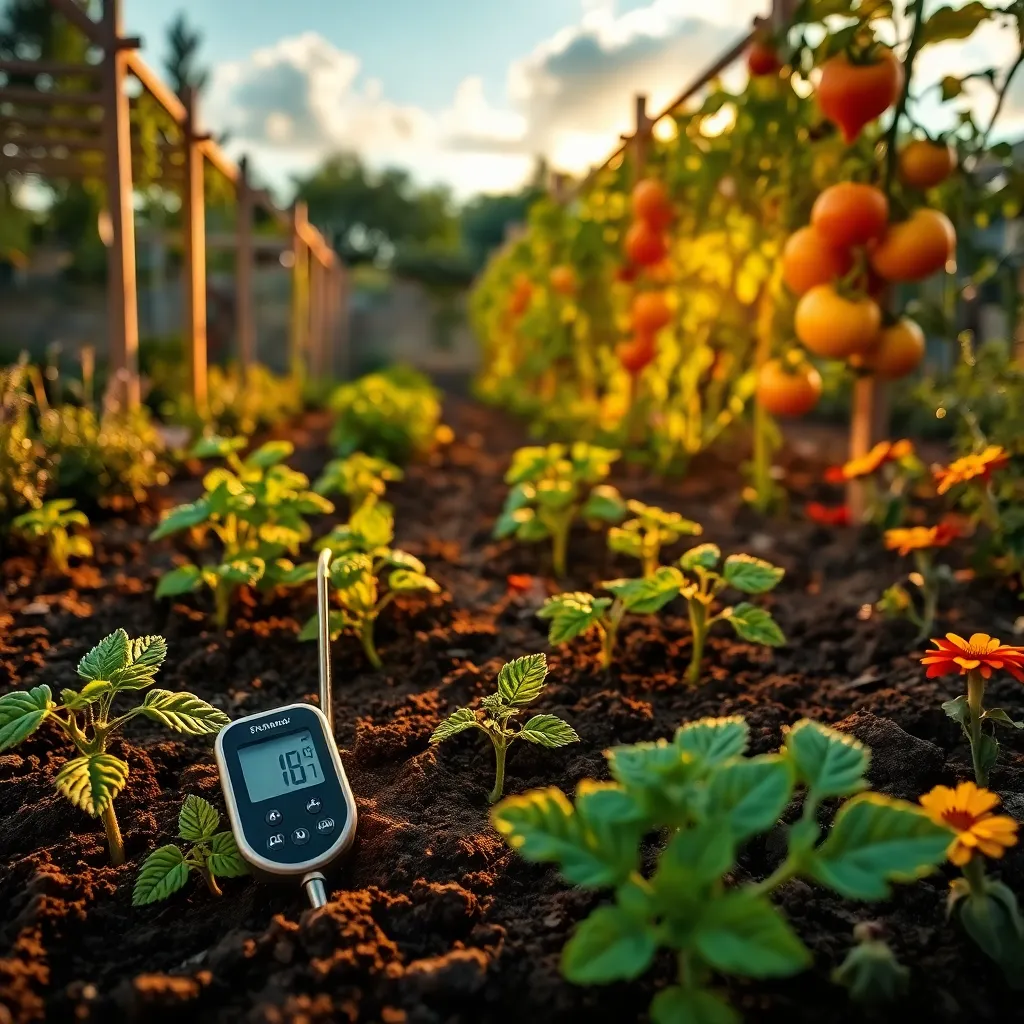
Ensuring the soil is at the right temperature before planting tomatoes is crucial for a successful harvest. A soil thermometer is an essential tool for precisely monitoring soil temperature, helping you determine the optimal planting time.
Tomatoes thrive when the soil temperature is consistently above 60°F (16°C), which promotes strong root development. Using a soil thermometer, you can check the temperature at a depth of about 2 to 4 inches, allowing you to plant with confidence.
For beginners, it’s a straightforward process: simply insert the thermometer into the soil and wait for the reading to stabilize. More advanced gardeners can use the thermometer to monitor fluctuations in temperature throughout the day, ensuring that the soil retains adequate warmth during cooler nights.
Consider taking temperature readings in the early morning and late afternoon to get a sense of the daily range. Consistent readings in the optimal range will help prevent common issues such as poor germination and slow growth.
Self-Watering Planters (Consistent Moisture Control During Peak Growing Season)
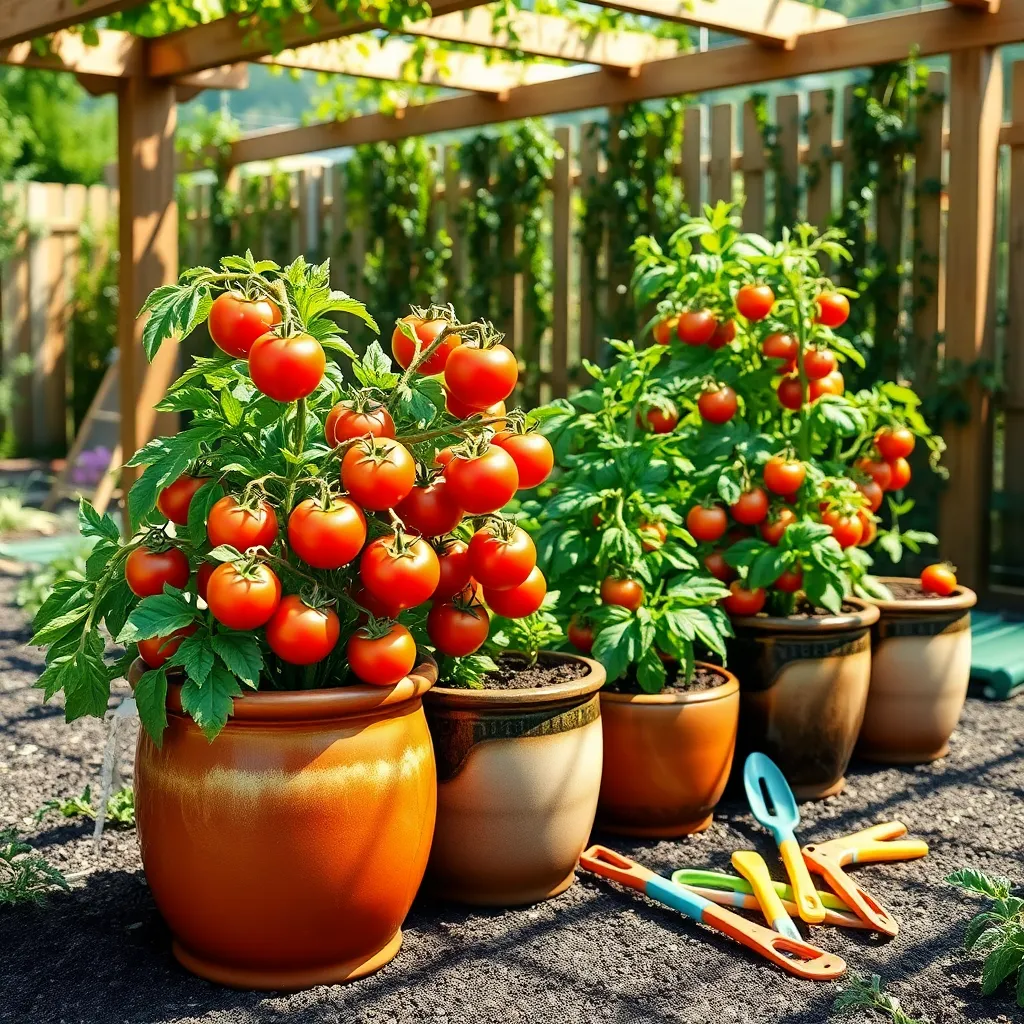
Self-watering planters are a fantastic tool for maintaining consistent moisture levels during the peak growing season for tomatoes. These planters use a reservoir system that allows plants to draw water as needed, reducing the risk of over or under-watering.
Incorporating self-watering planters in your gardening routine can be particularly beneficial for busy gardeners who may not have time to water daily. This system ensures that your tomato plants receive a steady supply of moisture, which is crucial for producing juicy, flavorful fruits.
To maximize the effectiveness of self-watering planters, use a high-quality potting mix that’s designed for good drainage and aeration. Include materials like perlite or vermiculite in your soil mix to ensure that the roots receive plenty of air, which is as important as moisture for healthy plant growth.
For gardeners looking to take their tomato care to the next level, consider adding a slow-release fertilizer to the potting mix. This will provide your plants with essential nutrients over time, complementing the consistent moisture supply and promoting vigorous growth throughout the season.
Conclusion: Growing Success with These Plants
In exploring the ‘Best Time To Grow Tomatoes,’ we’ve uncovered five pivotal relationship concepts that resonate beyond the garden. First, timing is everything—understanding when to nurture can make all the difference. Second, patience is key; growth requires both time and care. Third, communication parallels watering, as consistent interaction fosters healthy development. Fourth, recognizing and addressing challenges early can prevent future issues, much like tending to pests. Lastly, adaptability allows for thriving in varying conditions, a crucial trait in any relationship.
As an actionable next step, take a moment today to engage in a meaningful conversation with your partner, focusing on one of these principles. Discuss how you can incorporate these insights into your relationship journey.
Don’t forget to save or bookmark this article, ensuring you have these valuable tips at your fingertips whenever you need a reminder. By integrating these concepts, you’re planting seeds for a flourishing relationship future. Remember, with dedication and the right approach, your relationship can blossom just as beautifully. Here’s to a future filled with growth, understanding, and love. 🌿

